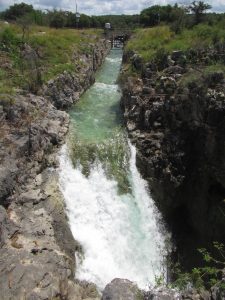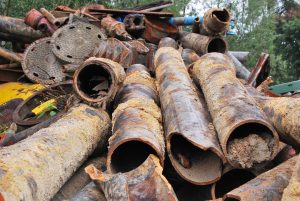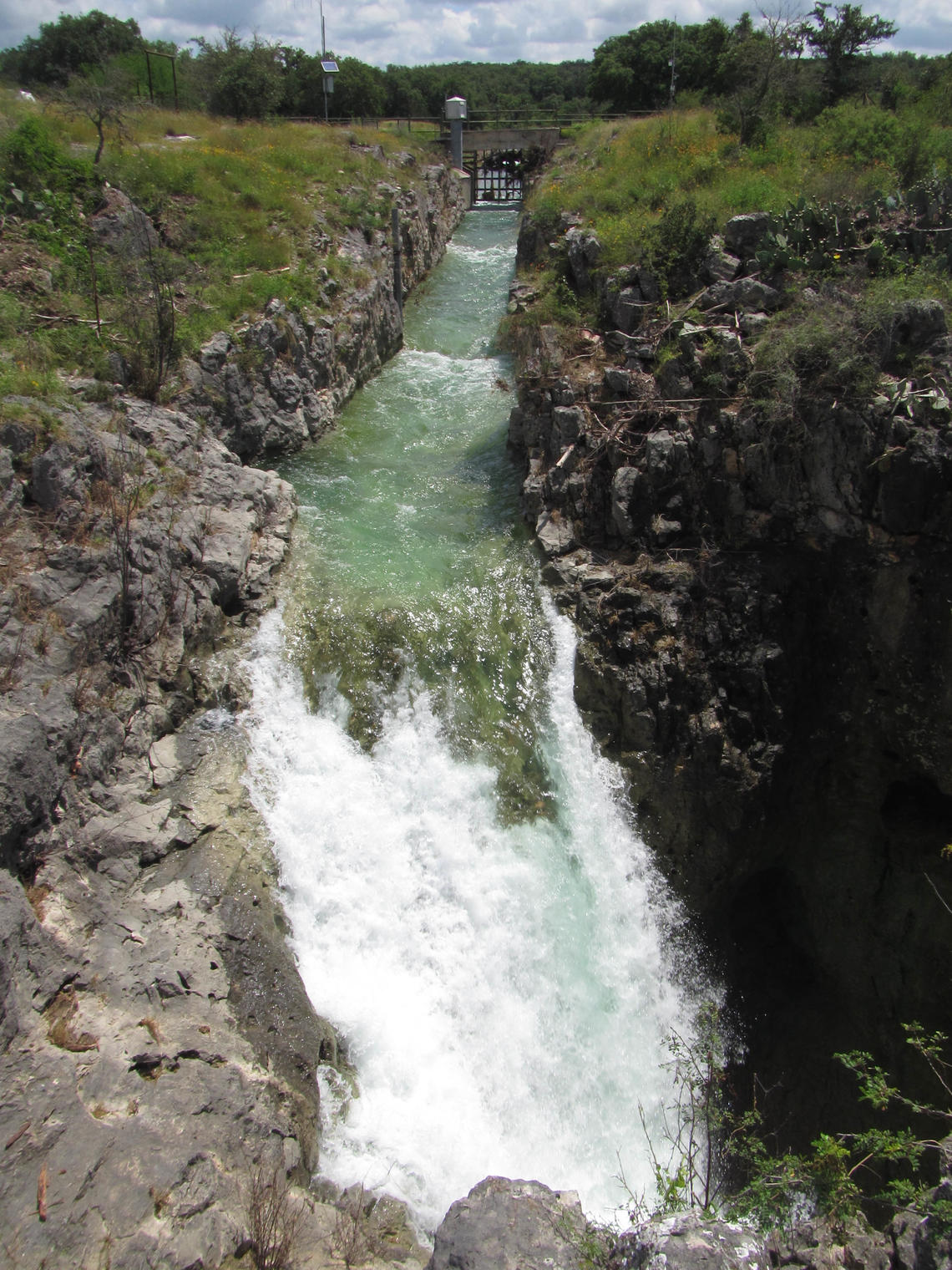
The Edwards Aquifer beneath south-central Texas provides drinking water for about 2 million people and is crucial for the state’s agricultural industry. Stormwater management is particularly important for the region because runoff can enter the aquifer through cracks, caves, and sinkholes, potentially bringing toxic pollutants with it. Seen here, the Seco Creek sinkhole in Medina County, Texas, is one of the aquifer’s largest recharge zones. U.S. Geological Survey
In June, the City of San Antonio awarded $2.6 million to researchers at the University of Texas at San Antonio (UTSA) to support three stormwater management projects over the next 3 years, according to a UTSA release. Each project protects the Edwards Aquifer by lowering risks of runoff contamination.
Lying beneath south-central Texas, the massive, 3,237-km2 (1,250-mi2) Edwards Aquifer is a key source of drinking water for approximately 2 million people. The state’s booming agricultural economy, worth some $20 billion each year according to estimates from the Texas Department of Agriculture, also relies on the Edwards Aquifer to provide clean water for irrigation.
Stormwater runoff can seep into the aquifer through fractures, caves, and sinkholes, and, if left untreated, can threaten the aquifer’s ability to provide clean water.
“At UTSA, we continuously work to create engineering solutions for problems that our communities find meaningful,” said JoAnn Browning, dean of the UTSA College of Engineering. “These projects are another example of how we work to serve San Antonio.”
Stormwater management for aquifer protection
UTSA civil engineers and environmental scientists Vikram Kapoor, Samer Dessouky, and Jeffrey Hutchinson will lead the first project, which will focus on managing runoff generated from San Antonio’s busiest roadways.
The research team will determine which plants roadside stormwater retention basins should include to maximize rain infiltration in arid central Texas. Researchers will compare “native perennial and evergreen xeric vegetation” in search of plants that absorb runoff and filter such toxic roadway pollutants as polycyclic aromatic hydrocarbons while remaining cost-effective, Hutchinson said.
For the second project, UTSA engineers Tom Papagiannakis and Marcio Giacomoni will explore the potential of using four different types of permeable pavements to manage stormwater runoff while also reducing urban heat-island effects. The researchers will measure which permeable pavement material — asphalt, concrete, plastic-grid pavers, or interlocking-concrete pavers — absorbs the most stormwater runoff while maintaining the coolest temperature. They will base their findings on measurements using rainwater samples from storms.
According to the U.S. Environmental Protection Agency, pavements hotter than 38°C (100°F) can increase the temperature of freshly fallen rain by about 14°C (25°F). When heated runoff reaches aquatic ecosystems, the sudden differences in water temperature can be stressful or even fatal to plants and animals that live there.

One project, supported by a $2.6 million grant to researchers at the University of Texas at San Antonio, will replace up to 42 km (26 mi) of corrugated metal sewer lines, many of which have fallen into disrepair and pose risks for aquifer contamination. The team will explore using trenchless technologies as a replacement for expensive pipe repair projects, which the researchers estimate would cost the city billions. Pixabay/PublicDomainPictures
Closer to the Edwards Aquifer, San Antonio manages an underground network of corrugated-metal collections systems, many of which have failed or collapsed in recent years, according to the release. A third project, led by UTSA civil engineers Hatim Sharif and Samer Dessouky, will replace many of the city’s worst-condition pipes with trenchless technologies that channel stormwater into nearby creeks to alleviate flooding. The replacement project will affect approximately 42 km (26 mi) of corrugated pipe, Sharif estimates, sparing the city from costly emergency repairs.
“The city has miles of old corrugated metal pipes that are deteriorating in San Antonio. To replace that, it will cost billions and take more than 100 years,” Sharif said. “The city is trying to find cost-effective and fast solutions.”
Support at the cash register and ballot box
Revenue from a municipal tax approved by San Antonio voters in 2000 will support the vegetation survey and permeable pavement study, while the corrugated metal replacement project uses funding from the municipal stormwater management budget.
The 2000 measure, known as the Edwards Aquifer Protection Program, authorized a 1/8-of-a-cent addition to the local sales tax in Bexar County, providing the city government $45 million to purchase environmentally critical land above the Edwards Aquifer.
Voters affirmed the measure in 2005, adding an additional 1/8 of a cent to the sales tax and generating $90 million for land purchases. The sales tax has not increased since 2005, but subsequent continuations of the program have resulted in several new water conservation projects and new conservation areas that ensure the health and safety of the Edwards Aquifer.





